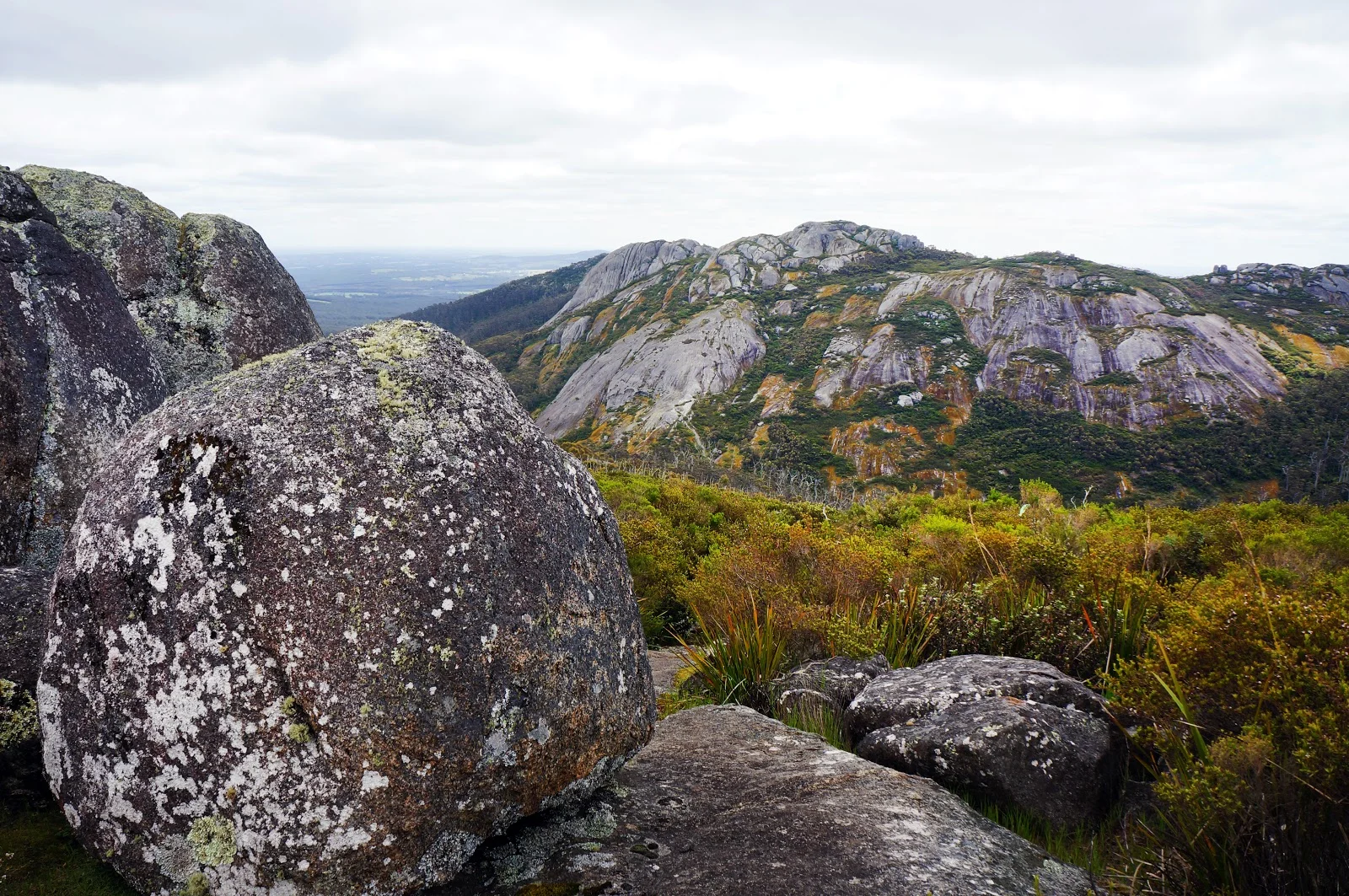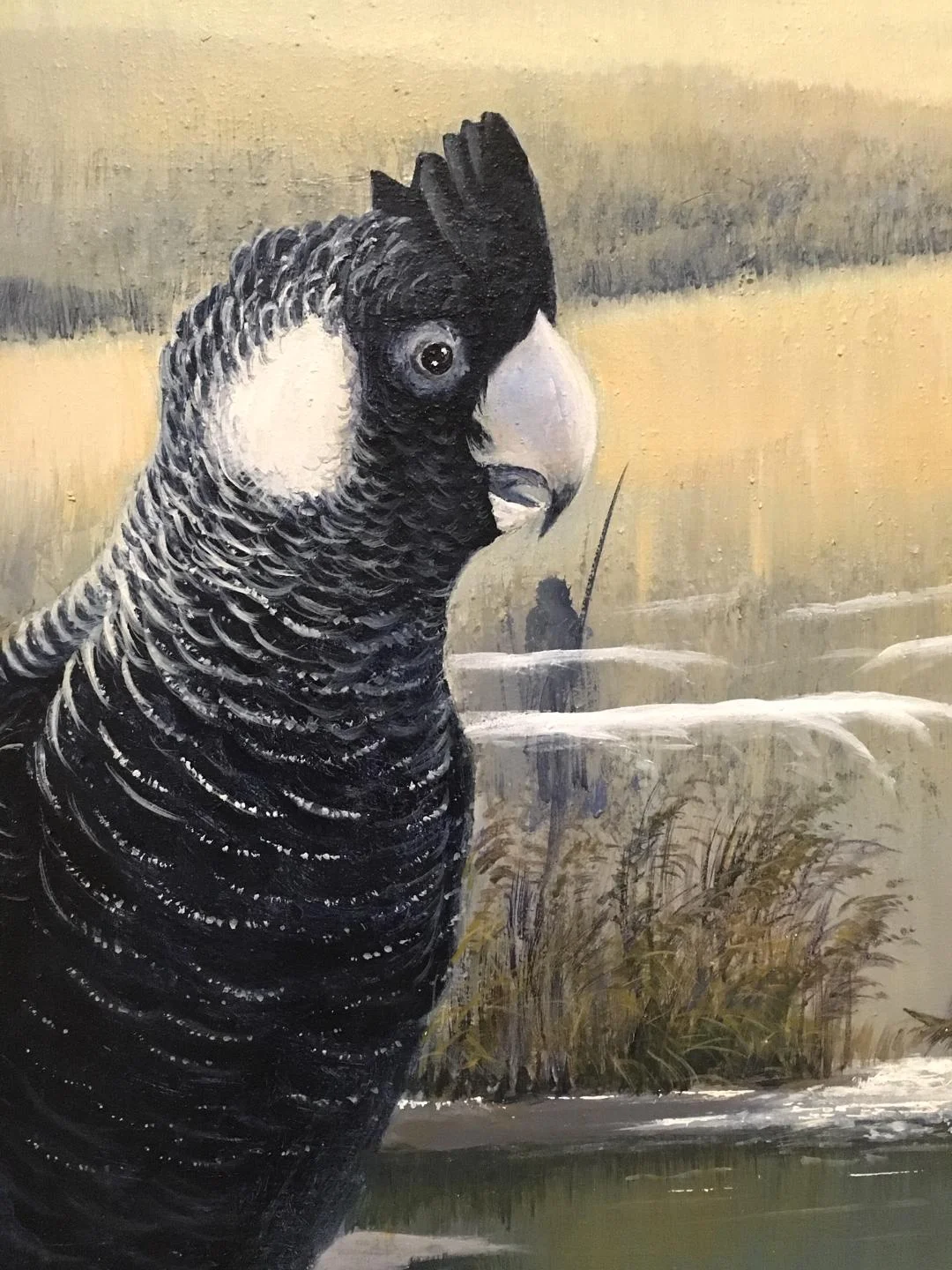Lance Chad, Tjyllyungoo, a Bibbulmun Nyoongar/Budimia Yamatji artist born in Bunbury in southern Western Australia, startled and fascinated me recently with his powerful paintings at the Western Australian Art Gallery in Perth. Presented under the title, Ibelongyoubelongwebelong, his large format paintings tell of his life-long quest to explore Aboriginal spirituality and the deep connection to Land and Country.
The paintings made me stop in my tracks: they require careful study and appreciation, thought and later reflection about their universality, despite being essentially of Western Australia and its Aboriginal heritage. Elsewhere in the Art Gallery, his wonderful, straightforward landscapes hang as testimony to his deep love and knowledge of his land
Morning, synthetic polymer on canvas, 2000, Lance (Tjyllyungoo) Chadd artist (photograph J. Cook)
Koitunerup, acrylic on canvas, 2014, Lance (Tjyllyungoo) Chadd artist (photograph J. Cook)
Despite the magical luminosity of these landscapes, it was his other paintings that I found so thought-provoking. A Bibbulmun Nyoongar Aborigine born in 1954 to a family where art, spirituality and connection to land had always been present, Lance Chadd has delved deeper and deeper into the implications of this unity with land, the historical aspects of the advent of the white men in Australia and the unity of all species dwelling therein. Interestingly, the exhibition was presented without beginning nor end, in a circular fashion.
Change, acrylic and collage on canvas, 2013, Lance (Tjyllyungoo) Chadd artist (photograph J. Cook)
Most of the other paintings in the exhibition were different - less narrative in theme and much more about “Aboriginal spirituality and cultural research on connection to country, in particular the Boorongurup (Porongorup Ranges), the oldest granite formation on Earth. Boorongurup is an important place for Bibbulmun Peoples and the most important Winartj sacred place on Country”, as the Art Gallery label explained. They certainly made me reflect on how each of us as artists can portray connections to land, nature or our spiritual heritage(s), no matter where we live or create art. And increasingly, those thoughts and messages, overt or implicit, in art seem important to my way of thinking as we careen to a drastically changed world in so many aspects. One of the most stark of his paintings, in this sense, was Picking up the Pieces.
Picking up the Pieces, acrylic on canvas, 2009, Lance (Tjyllyungoo) Chadd artist (photograph J. Cook)
Picking up the Pieces, (detail) acrylic on canvas, 2009, Lance (Tjyllyungoo) Chadd artist (photograph J. Cook)
Lance Chadd’s painting technique is superb and thus one almost does not notice it - although one should! - because of the content of the painting itself. Each painting’s complexity and layers of meaning, implication and deep sense of connection to this ancient, extraordinary land really require time and thought to even begin to understand and appreciate them.
Having seen a little of the astonishingly powerful and beautiful Porongorup Range and its nearby Stirling Range north east of Albany last year, when I visited Western Australia, I can understand, even to a minute extent, the depth of feeling an Aborigine could have for such places.
Porongorup Range (Image courtesy of The Long Way’s Better)
Porongorup Range (Image courtesy of the Parks and Wildlife Services, WA)
Mt. Hassell, Stirling Range (Image courtesy of Off the Beaten Track WA)
Lance Chadd’s depiction of such ancient lands is powerful.
Yoorn Boorongur, acrylic on linen, 2014, Lance (Tjyllyungoo) Chadd artist (photograph J. Cook)
Waitj Boorongur, acrylic on linen, 2014, Lance (Tjyllyungoo) Chadd artist (photograph J. Cook)
Ngoorlark Boorongur, acrylic on canvas, 2015, Lance (Tjyllyungoo) Chadd artist (photograph J. Cook)
Ngoorlark Boorongur, (detail) , acrylic on canvas, 2015, Lance (Tjyllyungoo) Chadd artist (photograph J. Cook)
Yongar Booronup, acrylic on canvas, 2014, Lance (Tjyllyungoo) Chadd artist (photograph J. Cook)
Even the titles of Lance Chadd’s paintings evoke his Nyoongar origins, and remind us of the Aborigine beliefs that spirit, or wirin, pulses through the Country, keeping everything, from plants to animals and humans, alive. Beliefs that we should all espouse and observe more in our own ways in this rather beleaguered planet….
As an artist, Lance Chadd is certainly making viewers of his paintings think and marvel. All of us, as artists of one form or another of creativity, should be doing the same to remind us to care better for our Land or Earth.












